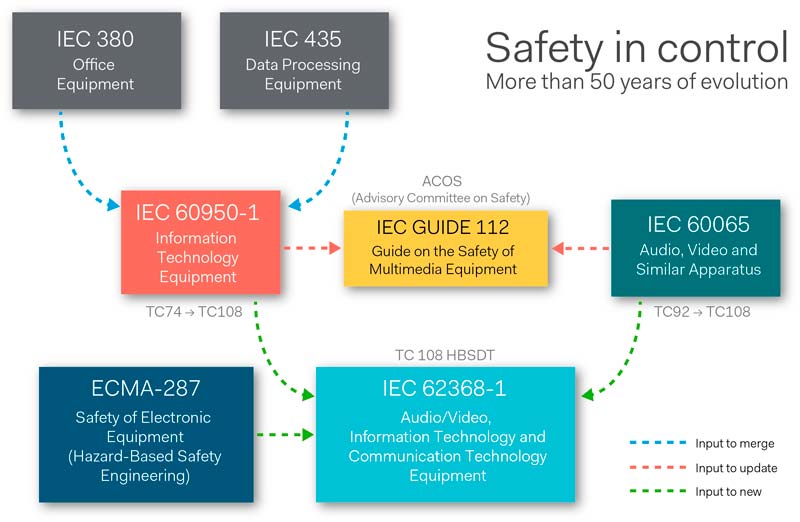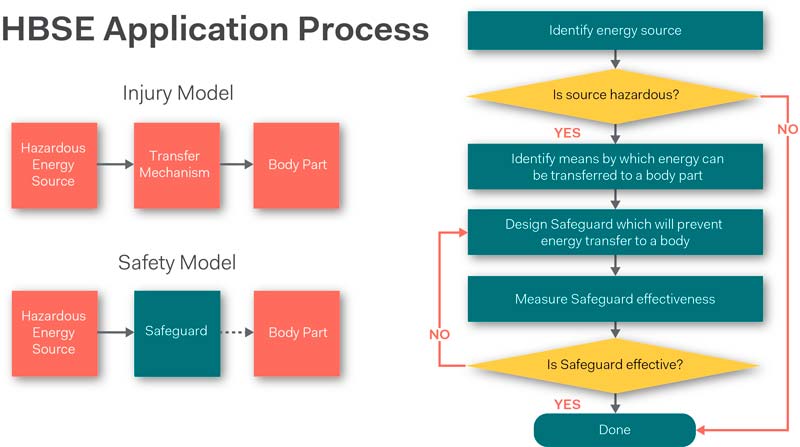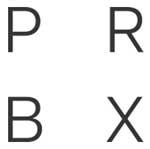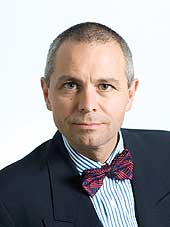Deadline is coming soon!
On December 20, 2020 the safety standard IEC/EN 62368-1 for High Technology Products will become applicable in Europe and U.S.A, and will supersede the well-established IEC/EN 60065 and IEC/EN 60950. The empowerment of IEC/EN 62368-1 is an important step forwards, principally aiming to make audio/video, information and communication technology products safer but in fact its implications within the electronics industry, and the range of products concerned goes far beyond the defined segment.
It seems December 20, 2020 is a long ways off, however if we consider the time it will take to: Identify legacy products and/or components to transition from IEC/EN 60065/60950 to IEC/EN 62368-1 ; identify and mitigate any potential non-compliance issues and how to solve them ; and to learn about the new standard and how it’s going to affect new designs and change our way of working, there is no time to lose!

Figure 1: IEC/EN 62368-1 is not a merge of the two standards IEC/EN 60065 and IEC/EN 60950 but a completely new one introducing a new way of working.
When market is moving fast – conventional way of working is not enough!
With the rapid development of new technologies in telecommunications, more than 20 years ago safety and standardization experts considered that the growing number of equipment incorporating communications accessible to professional and non-professional users might require specific safety standards for what will become the so called Information and Communication Technologies (ICT).
In the late nineties, the old 1952 IEC/EN 60065 standard governing audio/video equipment went through six revisions and despite the new IEC/EN 60950 governing safety in IT equipment being released in October 2001, when taking into consideration technology roadmaps presented by the ICT leaders (e.g. Ericsson, Cisco, Nokia), the safety and regulatory experts realized that when billions of connected devices are released to the market, IEC/EN 60065 and IEC/EN 60950 might not be sufficiently relevant without mentioning applications that in those days were more science fiction than reality.
In order to prepare for the massive flow of new devices and applications, in 2001 the International Electrotechnical Commission (IEC) merged two technical committees, the TC74 (data processing equipment and office machines) and the TC92 (electronic equipment for household and similar equipment), forming the technical Committee 108 (TC108) responsible for the safety of electronic equipment within the field of audio/video, information and communication technology (figure 1).
TC 108 was the formal starting point of a project to develop a new standard suitable for the changing telecommunications industry and collaterals. A massive amount of work took place drafting the foundations of what in June 2010 materialized as the first edition of IEC/EN 62368-1.
Compared to what we are used to, in what IEC/EN 62368-1 is different?
First of all, it is important to understand that IEC/EN 62368-1 is not a merger of the two standards IEC/EN 60065 and IEC/EN 60950, but a completely new one introducing a new way of working.
Taking into consideration that the wave of new products in the areas of audio/video, ICT and collateral will be used by a large number of professional and non-professional users, but also that a number of new applications including communications outside the scope of the existing IEC/EN 60065 and IEC/EN 60950 might not be covered by those standards or require a complex revision of them, the technical committee (TC 108) adopted a fundamental different approach. Instead of developing a new ‘restrictive and directive’ standard they decided to develop a new one based on the best practices already defined by the European Computer Manufacturers Association (ECMA) in ECMA-287.

Figure 2: The Hazard-Based Safety Engineering (HBSE) principles integrates safety in the very early stage in the product design cycle, so that subsequent product design eliminates them.
ECMA-287 is a safety standard for electronic equipment developed in the late nineties to respond to new market conditions in that business segment. The opposite of what we are used to, ECMA-287 is a hazard-based engineering standard that defines a hazard as an energy source that exceeds the limits of the human body’s susceptibility to harm.
The first edition was released in 1999, followed in December 2002 by the second edition. The final draft of the second edition has been used by the IEC TC108 Hazard Based Development Team as the master reference when developing IEC/EN 62368-1.
Moving from Incident-Based to Hazard-Based way of working!
Historically, safety standards follow a set of rules and criteria developed around an Incident-Based methodology. This methodology has been practiced for many years with the principle of using the inversion of bad experiences, analysis of historically based incidents, and prescribing limited acceptable constructional methods for a specific business segment and range of applications.
Looking back, many safety standards revisions have been related to incidents with the potential to cause damage, and revision after revision set the rules for specific business segments. It worked well when the target segment was stable, but not so in the case of rapid evolution and new applications outside the original scope. IEC/EN 60950 and IEC/EN 60065 are very direct in how to design products, but slow to update for the regulators and costly for companies to requalify products.
Also, a standard with too narrow a scope is limiting and restricting its application which, if we consider the speed of introduction of new technologies and connected devices released every year, makes it almost impossible for the regulatory to align standards. It may be anecdotal, but how do you certify safety for an immersed power supply powering servers in mass datacenters, which is an ICT equipment not even considered possible a few years ago?
It is obvious that in the new market conditions, incident-base standards have reached their limits and that was the reason for the TC-108 to consider a new way of working.
Hazard-Based Safety Engineering (HBSE) has been used for more than 25 years in other industries, and used by the regulatory agencies as a reference when elaborating safety standards. HBSE is a methodology that defines a hazard as an energy source that exceeds the limits of the body’s susceptibility to injury, defining a number of processes to guarantee users’ safety.
Based on the expertise and implementation of ECMA-287 to electronic equipment, IEC/EN 62368-1 extended the standard to cover a wider category of equipment and applications which due to time constraints were not covered by ECMA-287 Revision 2.
Moving from incident-based to hazard-based safety standards is a journey, and if for medical power supply designers used to IEC 60601-1 and risk assessment methodology it is a relatively simple one, for many others it will mean learning a new way of working.
When defining hazards is key!
The Hazard-Based Safety Engineering (HBSE) principle integrates safety in the very early stages of the product design cycle, so that subsequent product design eliminates them (figure 2). To do that, designers use best practice engineering supported by research and field data, including the risk of injuries, relevant equipment standards and pilot documents.
What is new for many is that HBSE not only covers electrical shock as it was in previous standards but many other potential hazards and energy sources. To simplify, the HBSE principle can be simplified in three bullet points:
• All potential hazards capable of causing pain or damage to users are taken into account. Such dangers could be for example, electrical shock energy, mechanical energy, electrically caused fire, chemical energy, thermal energy and radiation energy (including acoustic or optical energy).
• Proper safeguard schemes for hazard prevention are applied.
• The effectiveness of these schemes is measured.
During the design process, when an energy source and a hazard is identified, the designers will have to consider how that energy could be transferred to a user and what would be the level of risk of injury. IEC/EN 62368-1 classifies three levels of energy sources, from not painful to injury (figure 3). As it is defined in the standard, the three categories apply to the effect on the user (body) and effect on combustible materials.
Once that is done, designers will have to guarantee proper safeguards and to measure their effectiveness (figure 2).

Figure 4: Designed to power immerged applications, the PRBX OFI600A-12 includes the cooling liquid as one of the safety parameter included in the safeguard.
Understanding new terminologies!
Moving from incident-based to hazard-based methodology necessitates the need to understand HBSE nomenclature and best practices. As previously mentioned, new terminologies have been introduced in IEC/EN 62368-1 such as ‘Energy Sources’ and ‘Safeguards’.
Simplification has also been introduced e.g. Safety Extra Low Voltage (SELV) and Limited Current Circuits (LCC) referred to in 60950-1 have been combined, now falling under Energy Source Class 1, which is the level ordinary persons are allowed to access.
In the case of any hazard that may affect the user and/or operator, Class 2 and class 3 safeguards must be interposed between the energy source and the body.
Understanding the terminology is key to the learning process of IEC/EN 62368-1.
What about new applications?
Since its first version, IEC/EN 62368-1 has been through three revisions, the latest one (Rev. 3) being in October 2018. The third edition took into consideration a large range of new applications, including the anecdotal immersed power supplies for mass datacenters mentioned earlier.
Five new application areas have been added. These are outdoor equipment, insulating liquids, work cells, wireless power transmitters, and fully isolated winding wire (FIW). As well, there are three new requirements for other areas, these are in optical radiation, an alternative method for the determination of top, bottom and side openings for fire enclosures, and alternative requirements for sound pressure.
Considering the case of a power supply immersed in cooling liquid used to power a cloud mass-data server (figure 4), the power supply is tested according to IEC/EN 62368-1, ensuring that it works safely (no risk of injury for user) but also that its insulation shouldn’t deteriorate during its lifetime. In this case the cooling liquid, which is non-flammable and exhibits a very high electrical impedance is part of the safeguard, was definitely not included in previous safety standards.
A new level of freedom for power designers
The anecdotal immersed power supply is a good example to illustrate the flexibility of the HBSE methodology and the possibility to cover much more than a specific product. EN 62368-1 is definitely a technology-independent safety standard, introducing greater level of freedom for power designers, opening doors for lots of innovation.
Author: Patrick Le Fèvre, Chief Marketing and Communications Officer
Powerbox – A Cosel Group Company| www.prbx.com





